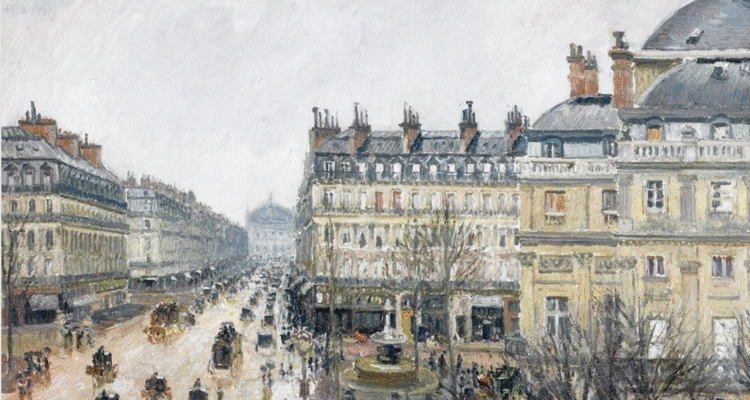Because behind every beautiful façade is a perfectly disheveled secret.
Paris has always seduced—but she also shocks. Beneath the boulevards and behind the salons, this city has been a stage for scandal: political cover-ups, illicit affairs, revolutionary whispers, and artistic tantrums so theatrical they could only be French. The city’s elegance has always coexisted with its audacity. And The Socialites have uncovered the juiciest chapters—the moments when Paris dropped her fan and bared her teeth.
Let’s take a stroll through the city’s most delicious historical controversies.
The Affair of the Diamond Necklace (1785) — The Scandal That Sparked a Revolution
It had everything: forged letters, stolen diamonds, secret rendezvous, and a queen caught in the crossfire. The Affaire du Collier saw an elaborate con involving a con artist posing as Marie Antoinette, a gullible cardinal, and a wildly expensive diamond necklace. The public, already suspicious of royal excess, believed the Queen was guilty. She wasn’t—but the damage was done. It became a PR catastrophe that fanned revolutionary flames.
Where it unfolded: Palais Royal gossip circles, Versailles court
Moral of the story: Never underestimate the power of a good jewelry scandal.
Oscar Wilde’s Parisian Exile (1897–1900) — The Fallen Dandy
After his imprisonment in England for “gross indecency,” Wilde fled to Paris and spent his last years broke, broken, and bohemian. He died at Hôtel d’Alsace in Saint-Germain (now L’Hôtel), famously declaring, “Either this wallpaper goes, or I do.” Though embraced by avant-garde circles, his time in Paris was one of public judgment and quiet legend.
Where to go: His grave at Père Lachaise (now lipstick-free after conservation efforts)
Legacy: Wilde’s fall became part of his myth—Paris gave him a final stage.
The Haussmann Rebuild (1853–1870) — Beautification or Social Purge?
Baron Haussmann may have given Paris her signature elegance, but his urban redesign was steeped in controversy. By demolishing medieval neighborhoods to create wide boulevards, he not only modernized the city—he displaced thousands. Critics accused him of gentrification before the term existed. Others said the boulevards were designed more to prevent revolution than to inspire beauty: harder to build barricades on a grand avenue.
Where to reflect: Boulevard Haussmann, with a side eye toward its perfection
Hidden drama: Haussmann was ultimately fired for overspending.
The Dreyfus Affair (1894–1906) — A Nation Divided
Captain Alfred Dreyfus, a Jewish French army officer, was wrongly convicted of treason. What followed was over a decade of national chaos: secret trials, forged evidence, antisemitism, and public intellectual outrage. Emile Zola’s explosive letter “J’Accuse…!” tore through the nation’s moral conscience and defined the modern intellectual’s role in public life.
Epicenter: Military tribunal at the Cherche-Midi prison; the intellectual salons of Montparnasse
End result: Dreyfus was exonerated. The Third Republic survived—but barely.
Picasso’s Stealing of African Art (Early 20th c.) — Inspiration or Appropriation?
Picasso’s so-called “African Period” revolutionized modern art—but was built on colonial theft. He discovered tribal masks and statues, largely looted from French colonies, at the Musée d’Ethnographie du Trocadéro. While the works inspired Cubism, the original creators were never acknowledged. Today, France faces increasing calls to return those artefacts.
See the shadows: Musée du Quai Branly (and the walls of modern art history)
Controversy continues: The debate over restitution is louder than ever.
The Panthéon Snubs (Ongoing) — Who Gets Buried in Glory?
The Panthéon, that hallowed temple to the French Republic, has long been a battlefield of symbolic inclusion. Why were there so few women interred? Why did it take until 2021 to honor Josephine Baker—a Black American-born entertainer, resistance fighter, and humanitarian? Each new induction is part celebration, part political drama.
Location: Panthéon, Latin Quarter
Current count: Still overwhelmingly male. Scandalously so.
The Élysée Love Affairs — Presidential Drama on Speed Dial
French presidents have often treated the Élysée like a velvet bachelor pad. From François Mitterrand’s secret second family (revealed only at his funeral), to Nicolas Sarkozy’s whirlwind divorce and remarriage to Carla Bruni, to François Hollande’s helmeted scooter escapes to see actress Julie Gayet, presidential affairs are practically a national sport.
Public response: Equal parts indifference, fascination, and existential shrugs.
Unspoken rule: As long as he does his job, let the man love.
The Moulin Rouge Riots (1890s) — Too Much Leg, Too Little Decency
When the can-can took Paris by storm, it wasn’t just dance—it was scandal. The Moulin Rouge was accused of corrupting morality with its high kicks, exposed petticoats, and champagne-soaked libertinage. The Church was outraged. The press was scandalized. The crowds? Ecstatic.
Where it happened: Boulevard de Clichy
Cultural impact: The scandal made it immortal.
Serge Gainsbourg & Brigitte Bardot’s “Je t’aime… moi non plus” (1967) — Too Sexy for the Airwaves
Originally recorded with Bardot (and then re-recorded with Jane Birkin), this breathy erotic anthem was banned on multiple French radio stations, condemned by the Vatican, and adored by everyone else. Its release caused a stir, and the original Bardot version wasn’t even allowed out of the studio for decades.
Legacy: Still played at every party where someone wants to feel scandalous.
Listen again: With headphones. In bed. Preferably not alone.
The Eiffel Tower (1887) — Paris Hated Her First
Now the beloved symbol of Paris, the Eiffel Tower was once considered monstrous. Writers and artists—including Maupassant—publicly condemned it as a “tragic streetlamp” and “iron asylum.” The Commission des Monuments Historiques tried to have it dismantled. Gustave Eiffel had to defend it like a parent at a PTA meeting.
Moral: Paris eventually falls in love with all her scandals.
Because Paris without scandal is just stone.
It’s the whispered secrets behind the curtains that make this city burn so brightly. And as any Parisienne will tell you: the best stories are the ones you shouldn’t tell—but do anyway.
—The Socialites


